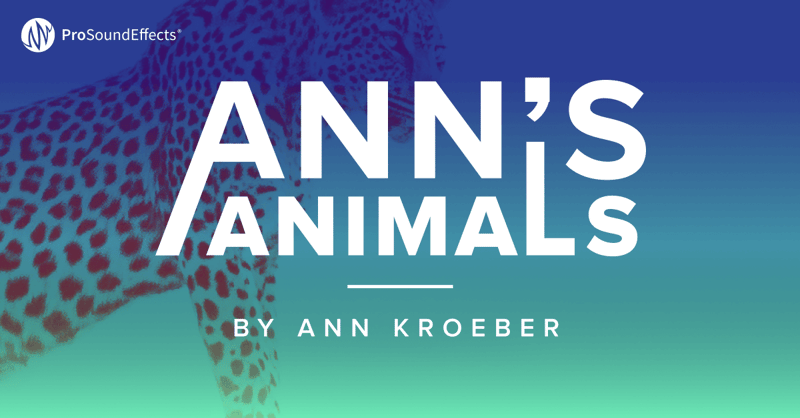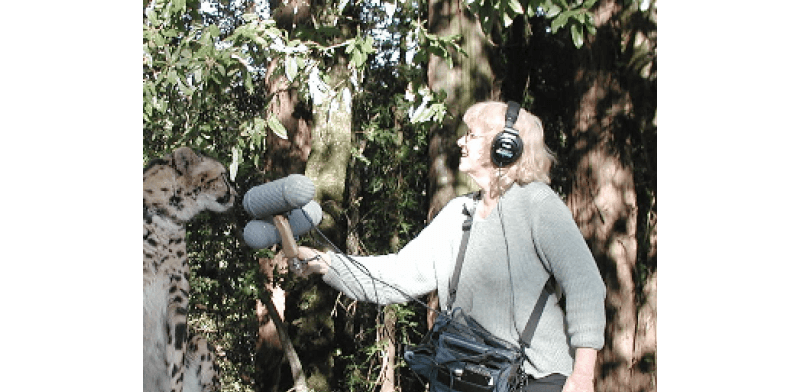
Get the stories behind some of the rare, powerful animal sound effects captured by film sound legend Ann Kroeber and featured in our latest library, Ann's Animals.
For sound artists, expressive animal sounds are so sought out both because of their practical uses and applications as a sound design tool. Celebrated recordist and sound effects curator, Ann Kroeber, takes this into account from the very start of the process.
Animal recordings play a significant role in Kroeber’s sonic legacy, and she is widely celebrated for her natural approach and incredibly expressive results. With decades of experience and material from countless projects as a recordist, sound designer, and effects editor, Kroeber created Sound Mountain – an acclaimed, extensive recording collection which continues to provide sounds for many award-winning films and games.
To celebrate our latest sound effects library, Ann's Animals – the fifth exclusive Pro Sound Effects release from Ann Kroeber – we sat down with her to hear the insightful stories behind some of the library's incredible sounds.
Explore the Ann's Animals sound effects library:
What can we expect from this new library? How would you describe it?
This collection of animals is so close to my heart. It’s been recorded over quite a number of years that I've collected animals, and it's so special to me. I often recorded either at a zoo or a preserve, sometimes in the jungle, sometimes in the desert, and you come to find that some of the animals are so friendly and you can really just talk to them. For the more threatening animals, I found that the way to get them to sound aggressive is to get a rival animal on a lead and walk alongside with it, and the aggressive sounds really get going. There are just so many different emotions in this library, along with a lot of memories and critters. I'm delighted to put these sounds out and share them with the world.
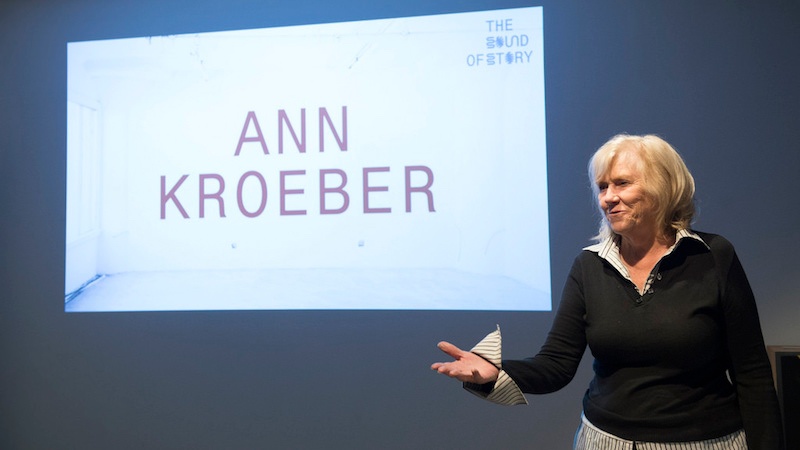 The Sound of Story 2016 – Women in Sound Forum
The Sound of Story 2016 – Women in Sound Forum
Credit: Lighthouse / Photo by Adam Bronkhorst (adambronkhorst.com)
Can you share the stories behind the recording process for a few of the sounds in the library?
I told this story in our previous interview, but now you get to hear the amazing sound that came from it. I was asked to go out and record these monkeys at the San Francisco Zoo. There was this place called Monkey Island, and they had these big monkeys that roamed around in this lovely space. They let me go in but said, "Okay, there aretwo rules: You can't look at them, and you can't talk to them." And I said, "Oh my goodness, I need to be able to do both.” And she rolls her eyes and goes, "Okay, but it's on you." I didn't know that monkeys can be kinda dangerous sometimes.
Once I got to the space, I see a huge rock with these little eyes peering over the top, and I said "Come here! I got something really cool to show you!" And a fairly big monkey comes walking down the side of the rock, and the whole monkey troop follows him in single file. They came down and sat around me like little school children, cross legged and curious. So I showed them my Nagra tape recorder, and I explained to them how it worked. They were fascinated, and I find this to be the case so often with animals over the years. People have no clue how smart animals are, and how delighted they are if somebody will talk to them and actually treat them with respect.
"People have no clue how smart animals are, and how delighted they are if somebody will talk to them and actually treat them with respect."
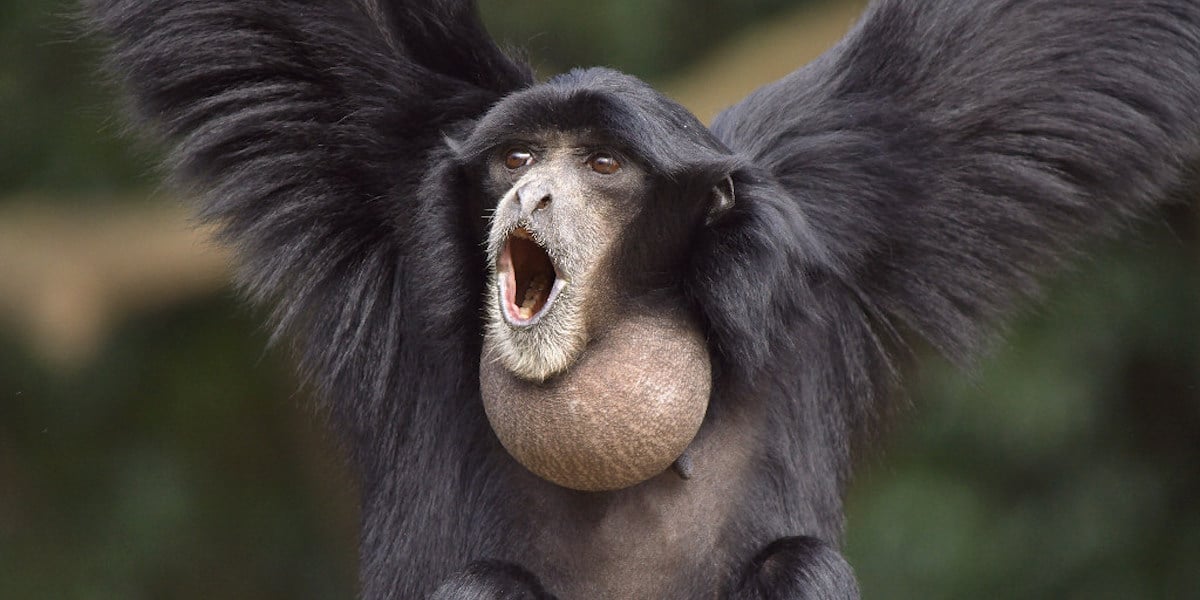
These monkeys were incredible, and I showed them the microphone, and told them about the Dusky Titi monkeys I recorded earlier. I told them, "I recorded these monkeys that are over that way in the zoo, you probably haven't heard them." So I played them the recording of these little Dusky Titi monkeys that make kind of “cheep” and “chirp” sounds. I told the Siamang monkeys, "You guys can do better." And they look, and they jump up, and they start hooting and hollering and just going wild, and that’s the sound. It was incredible! One of them even got on my shoulder and was hooting right into the microphone. It took me about four days to come off my cloud – I was so stunned by it and so excited. I think the most important thing in recording animals is not to have any expectations, but just treat them with kindness and love and explain to them what you're up to.
A number of years later, I was working on a Carroll Ballard film called Duma. It was about a boy and a cheetah, and I was asked to go out and record and edit cheetah sounds for them. I actually ended up doing sound design on that film too. I went out to a cheetah preserve near San Francisco, and the man who owned the preserve was really nervous about our being there, because a cheetah had attacked a French correspondent that had come several months prior. We talked to him, told him we’d stand back and of course stay behind the fence, and be careful not to get too close.
As I was wandering around, I saw this cheetah looking at me, and I said, “Hey! I gotta show you something! It's really cool!" and the cheetah comes walking over like, "Yeah, what?" I told him that I was recording, and the cheetah sat down right on the other side of the fence from me, and it purred into my microphone and then stood up and continued purring. That was exactly a sound that I needed for the movie.
"I think the most important thing in recording animals is not to have any expectations, but just treat them with kindness and love and explain to them what you're up to."
About 8 or 9 years ago, I went to a cat preserve. I was working on a children's game for a company in England, and I was recording young wild cats like leopards and cougars. It was a huge preserve and they had the momma cats and big animals and the little babies around. I went there for about five days and while I was walking over to the area to record the young cats, there was this big, huge, gorgeous Bengal tiger named Cesar. He was so beautiful. He was in a huge area, but you could tell he wasn't happy.
He came over to me, and he saw this microphone I had with the fluffy wind screen, and he was curious about it. So as always, I just explained to him what it was. So every day, about four or five days into this, I'd walk by him and he'd come over and he'd talk to me in the microphone, in a real "nobody knows the troubles I've seen" type of way. One day he looked at me, and he leaned the back of his head against the fence, and wanted me to pet him. I wanted to so badly but I of course was told not to, so I told him that I was sorry, but I wasn't allowed to. And he pulls back, and he just glares at
me, and then he shakes his head as if saying, "You don't trust me? I'm not talking to you anymore, and he just walks away. I felt terrible."
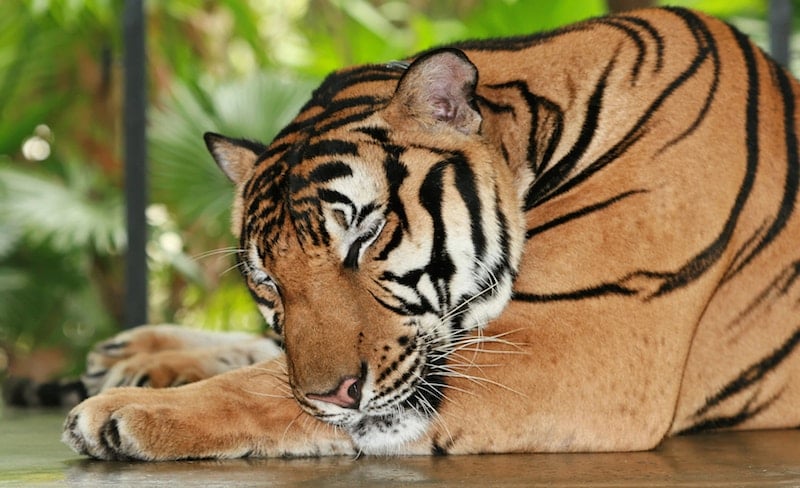
On the same cat preserve, there was this sort of event I would hear from afar in the evenings, where the big cats would get together in the different compounds they were in, and they would make these chuffing sounds, back and forth. I was told that they won't do it around people, so if I went around and tried to record them, they would just stop. It's just something that they do with each other, and it's their special thing. On my last day there, I wanted to record this gathering, so I decided to set up my tape recorder, which I don’t usually do because I prefer to hold it to find the right spot to record, but in this case I couldn't.
I set my recorder up with a stereo pair, and put it outside of Caesar's compound where I had been recording him earlier. He had an eye on what I was doing, watching me from a distance. We went about two blocks away to get far away from them. When it started it was such a beautiful sound. I hoped I had caught at least some of that, somehow. I went back after it had all stopped and listened to them, and it was just incredible.
What had happened was Caesar had walked right up to the microphone, and like an old jazz singer, had done a solo to the leopards singing in the back. It was so amazing. I've thought of going back for so long to see Caesar, and thought, "If he bites my head off, it's okay. I'm an old lady, there's worse ways to go." I was so touched by him.
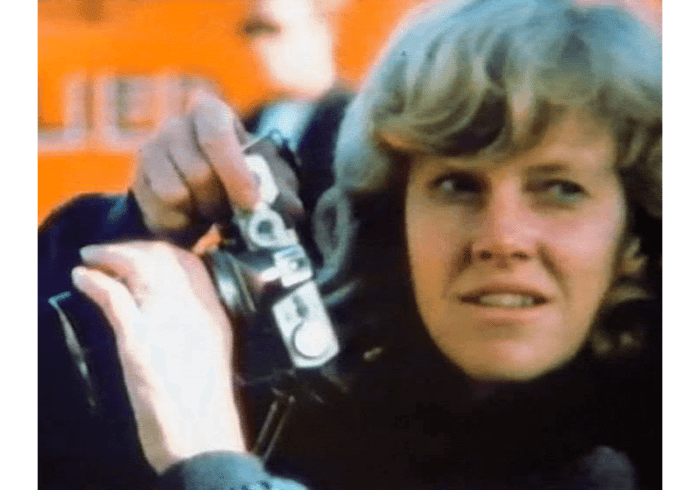 Kroeber on the set of Blue Velvet
Kroeber on the set of Blue Velvet
How will these sounds be useful for sound artists to use in their projects?
There are so many different ways these sounds can be combined. For example, I worked on a movie with someone who needed dragon sounds. I took some of my animal sounds, and I helped him make these dragons just by layering them with other sounds. One of them was a combination of a pitbull and an oven rack squealing, and some other little critters for personality, and it worked perfectly. You can combine all sorts of things, like a camel and a cougar, and get great stuff from them. They're meant to play with, not just to have and to go "Oh, isn't that cute."
These sounds have been in some pretty iconic films, and while there's amazing stuff that people are recording now with new technology, I think there's something special about this library that makes it so useful because of the way that the critters truly express themselves.
"I think there's something special about this library that makes it so useful because of the way that the critters truly express themselves."
